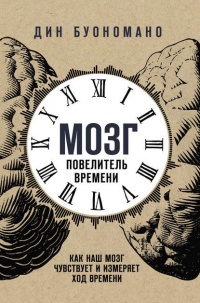Ознакомительная версия. Доступно 23 страниц из 114
20. Light J. E., Toups M. A., Reed D. L. What’s in a Name: The Taxonomic Status of Human Head and Body Lice // Molecular Phylogenetics and Evolution (2008), 47: 1203–1216.
21. Соколов А. Б. Дом-0. Древнейшая история жилищ. Часть I // XX2 век. 18.08.2015. https://22century.ru/popular-science-publications/history_of_housing1.(дата обращения: 15.04.2020).
22. Moore J. D. The Prehistory of Home. Berkeley: University of California Press, 2012, р. 288.
23. Lumley H. de. A Paleolithic Camp at Nice // Scientific American (1969), 220: 42–50.
24. Villa P. Terra Amata and the Middle Pleistocene Archaeological Record of Southern France. Berkeley: University of California Press, 1983, р. 303.
25. Moore J. D. The Prehistory of Home. Berkeley: University of California Press, 2012, р. 288.
26. Demay L., Pean S., Patou-Mathis M. Mammoths Used as Food and Building Resources by Neanderthals: Zooarchaeological Study Applied to Layer 4, Molodova I (Ukraine) // Quaternary International (2012): 212–226, 276–277.
27. Roebroeks W., Villa P. On the Earliest Evidence for Habitual Use of Fire in Europe // PNAS (Mar 2011).
28. Соколов А. Б. В течение 700 тысяч лет люди в Европе не использовали огонь // АНТРОПОГЕНЕЗ.РУ. 17.03.2011. http://antropogenez.ru/single-news/article/70/.
Глава 6. А паразиты — никогда
1. Schedl W. Contribution to Insect Remains from the Accompanying Equipment of the Iceman. // Bortenschlager S., Oeggl K. D. The Iceman and his Natural Environment. New York, 2000, p. 151–155.
2. Belt T. The Naturalist in Nicaragua. London: Published by J. M. Dent & Sons Ltd. and in New York by E. P. Dutton & Co., 1874.
3. Стандарт мексиканской голой собаки // Сайт питомника мексиканских и перуанских голых собак Sonderwol Legend. 13.10.2010. https://www.sonderwol.com/standard/стандарт-мексиканской-голой-собаки/ (дата обращения: 15.04.2020).
4. Darwin C. The Descent of Man, and Selection in Relation to Sex. New York: D. Appleton and Company, 1889, p. 57.
5. Lehmann T. Ectoparasites: Direct Impact on Host Fitness // Parasitology Today (1993), 9 (1).
6. Booth D. T., Clayton D. H. and Block B. A. Experimental Demonstration of the Energetic Cost of Parasitism in Free-Ranging Hosts // Proceedings of the Royal Society of London. B (1993): 125–129, 253.
7. Даррелл Д. Гончие Бафута. — М.: Центрполиграф, 2002.
8. Rantala M. J. Human Nakedness: Adaptation against Ectoparasites? // International Journal for Parasitology 29 (1999): 1987–1989.
9. Sutherland C. The Parasites of Homo sapiens — an Annotated Checklist of the Protozoa, Helminths and Arthropods for Which We Are Home // Parasite Immunology (2003), 25: 401.
10. Ashford R. W. Parasites as Indicators of Human Biology and Evolution // Journal of Medical Microbiology (2000), 49 (9): 771–772.
11. Tunga penetrans // Wikipedia. https://en.wikipedia.org/wiki/Tunga_penetrans.
12. Buckland P. C. and Sadler J. P. A Biogeography of the Human Flea, Pulex Irritans L. (Siphonaptera: Pulicidae) // Journal of Biogeography (Mar 1989), 16 (2): 115–120.
13. Hassanloo Z., Fenton M. B., DeLaurier J. D., and Eger J. L. Fur Increases the Parasite Drag for Flying Bats // Canadian Journal of Zoology (1995), Vol. 73.
14. Энциклопедия пилота. — М.: Редиздат ЦС Союза Осоавиахим СССР, 2011.
15. Rantala M. J. Evolution of Nakedness in Homo sapiens // Journal of Zoology (2007), 273: 1–7.
16. Pagel M. and Bodmer W. A Naked Ape Would Have Fewer Parasites // Proceedings of the Royal Society of London. B. (Aug 2003), 270.
17. Hamilton W. D., Zuk M. Heritable True Fitness and Bright Birds: a Role For Parasites? // Science (Oct 1982), 218 (4570): 384–7. https://www.ncbi.nlm.nih.gov/pubmed/7123238.
18. Thompson C. W., Hillgarth N., Leu M., and Mcclure H. E. High Parasite Load in House Finches (Carpodacus Mexicanus). Is Correlated with Reduced Expression of A Sexually Selected Trait // American Naturalist (Feb 1997), 149 (2).
19. Moller A. P., Christe P. and Lux E. Parasitism, Host Immune Function, and Sexual Selection // Quarterly Review of Biology (Mar 1999), 74 (1).
20. Schalk G. and Forbes M. R. Male Biases in Parasitism of Mammals: Effects of Study Type, Host Age, and Parasite Taxon // Oikos (Feb 1997), 78 (1): 67–74.
21. Prokop P., Rantala M. J., Usak M., Senay I. Is a Woman’s Preference for Chest Hair in Men Influenced by Parasite Threat? // Archives of Sexual Behavior (2013), 42: 1181–1189.
22. Rantala M. J., Pölkki M., Rantala L. M. Preference for Human Male Body Hair Changes Across the Menstrual Cycle and Menopause // Behavioral Ecology (Mar — Apr 2010), 21 (2): 419–423.
23. Prokop P., Rantala M. J., Usak M., Senay I. Is a Woman’s Preference for Chest Hair in Men Influenced by Parasite Threat? // Archives of Sexual Behavior (2013), 42: 1181–1189.
24. Stephens P. R., Pappalardo P., Huang S., Byers J. E., Maxwell J., Farrell M. J., Gehman A., Ghai R. R., Haas S. E., Han B., Park A. W. Global Mammal Parasite Database Version 2.0 // Ecology (May 2017), 98 (5): 1476–1476.
25. Reed D. L., Light J. E., Allen J. M., and Kirchman J. J. Pair of Lice Lost or Parasites Regained: the Evolutionary History of Anthropoid Primate Lice // BMC Biology (2007), 5: 7.
26. Weiss R. A. Apes, Lice and Prehistory // Journal of Biology (2009), 8: 20.
Глава 7. Как дети
1. Ashley M. F. Time, Morphology, and Neoteny in the Evolution of Man // American Anthropologist, New Series (Feb 1955), 57 (1): 13–27.
2. Gould S. J. Ontogeny and Phylogen. Belknap Press of Harvard University Press, 1977.
Ознакомительная версия. Доступно 23 страниц из 114
























